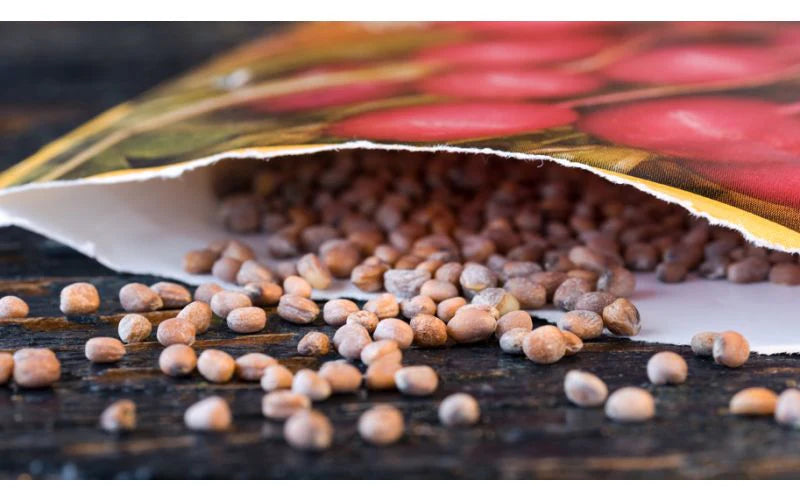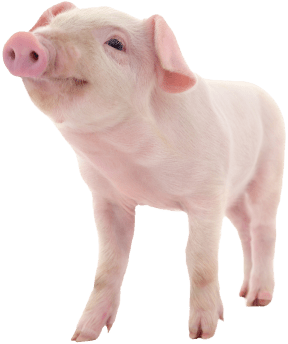
From Packet to Plant: The Art of Seed Sowing
|
|
Time to read 5 min
 You are being redirected to QC Supply Pharmacy, where you’ll find a wide selection of high-quality prescription and pharmaceutical products for animals of all sizes.
Enjoy the same great service and expertise you trust from QC Supply.
Click below to continue shopping.
Continue
No thanks, stay on the main site
Powered by
You are being redirected to QC Supply Pharmacy, where you’ll find a wide selection of high-quality prescription and pharmaceutical products for animals of all sizes.
Enjoy the same great service and expertise you trust from QC Supply.
Click below to continue shopping.
Continue
No thanks, stay on the main site
Powered by


|
|
Time to read 5 min
Starting plants from seed not only allows you to choose specific varieties best for your particular growing conditions and palate, but it’s more cost-effective than buying seedlings, particularly if you’re planting a large garden. Growing plants from seed is a wonderful family activity.
There seems to be an infinite number and variety of plants to grow: how do you decide which to choose and when to plant? And, is it better to plant seeds rather than seedlings from the store? Based on our many years of experience in the farm supply business, we are happy to offer advice on getting started.
Though growing plants from seed may seem like a daunting proposition at the outset, there are some good reasons for doing it versus buying young plants. First, you will have a lot more choice, in terms of plant variety, if you buy seeds. For example, if you’re interested in growing heirloom vegetables, there are many more seed varieties from which to choose than young plants available locally.
Starting plants from seed not only allows you to choose specific varieties best for your particular growing conditions and palate, but it’s more cost-effective than buying seedlings, particularly if you’re planting a large garden. Growing plants from seed is a wonderful family activity. It’s a good way to teach children about the cycle of life and the origins of their food. Engaging in seed sowing together can be both educational and rewarding.
It’s not hard to start plants from seed if you follow the directions (like following a recipe). The planting instructions printed on the back of seed packets will vary in terms of detail, depending on the supplier, but they’re very helpful.
Here is a list and explanation of the general information you’re likely to find:
Ultimately, the plant needs to be located in a spot in the yard that gets at least 6 hours of full sun each day. Most vegetable plants require full sun. Occasionally you will see a Part Shade icon which generally means the plant needs 4-6 hours of sun. Green leafy vegetables such as spinach, lettuce and chard are examples of cool weather plants that can tolerate partial shade.
Normal seed sowing depths are usually one-quarter to one-half inch. This is important since the seeds won’t germinate if they’re planted too deep and will dry out if they’re too shallow. Proper seed sowing depth ensures successful germination and healthy plant development.
Average soil is exactly what it sounds like: regular soil that’s reasonably well-drained. Alternatively, if the instructions call for planting in “enriched soil”, you must add compost or other organic matter to the soil before planting.
This refers to soil that readily absorbs water, allowing any excess to drain away. Heavy clay soils, which tend to hold water, are not well-drained and must be amended with peat moss or other organic substance to make them more hospitable as a planting medium.
This means lightly sprinkling soil on top of the seeds to keep them cool and moist without packing it down.
Newly-planted seeds need continuous, gentle moisture. Take care not to spray water on them with too much force as they will be washed away or drowned.
For new gardeners, the concept of thinning out seedlings can be confusing. Many seeds are so tiny, it’s next to impossible to plant them individually; they usually end up being planted in clumps. This makes the seedlings emerge crowded together, which ultimately hinders them from growing effectively. To thrive, plants need air and space, hence the reason for thinning seedlings at the appropriate time. Thinning simply means gently uprooting the excess seedlings with a knife or thin weeding tool, leaving the remaining plants spaced according to the seed packet instructions. Generally, you must wait to thin until just after the seedlings’ true (permanent) leaves appear.
Some seed packets provide regional guidelines for when you can safely plant your seeds outside. These guidelines are based on average regional temperatures which may not apply for certain years or certain microclimates; you need to use your best judgement.
Some gardeners start their seeds indoors 4-6 weeks before the last frost to get a jump on spring planting. Depending on where you live, in order to do this successfully, you may need to invest in a seedling heat mat and grow lights to simulate late spring outdoor growing conditions. Once the threat of frost has passed, the seedlings can be hardened off (gradually acclimated to outside temperatures) and transplanted outdoors. If you’re thinking about doing this, you need to do your research in advance as some plants don’t transplant well.
Learning how to grow your own plants is a hugely rewarding undertaking, but requires a substantial investment of time and a certain degree of confidence. We recommend starting out small and choosing plants that are relatively easy to grow. In addition to the information listed on the back of their seed packets, seed suppliers have additional information about their seeds and plants on their website which should indicate how difficult any given plant is to grow. In most cases, the key is providing the plant with enough sunlight and the right amount of moisture. Of course, Mother Nature can always derail the best laid gardening plans. If this happens to you, don’t take it personally; it just means you’re a member of the club.
Choose quality seeds : Select seeds that suit your climate, soil, and garden goals. Heirloom seeds are great for variety and flavor.
Follow packet instructions : Everything from depth to sunlight and spacing matters—treat it like a recipe for plant success.
Create a routine : Make seed sowing a regular part of your seasonal gardening prep for more control over crop timing and yield.
By understanding the basics of seed sowing and following the guidance provided on seed packets, you can embark on a successful gardening journey. Whether you're a seasoned gardener or a beginner, the art of seed sowing offers a fulfilling and cost-effective way to cultivate a diverse and thriving garden.
For more tips and high-quality gardening supplies, visit QC Supply.
This QC Supply blog post delves into the fundamentals of seed sowing, emphasizing its advantages over purchasing seedlings. It highlights the cost-effectiveness, broader variety selection, and the educational value of growing plants from seeds. The article guides readers through interpreting seed packet instructions, covering essential aspects like sunlight requirements, planting depth, and soil conditions. By following these guidelines, gardeners can enhance their success rates and enjoy a more personalized gardening experience. QC Supply
For a comprehensive understanding, read the full article here: From Packet to Plant: The Art of Seed Sowing .